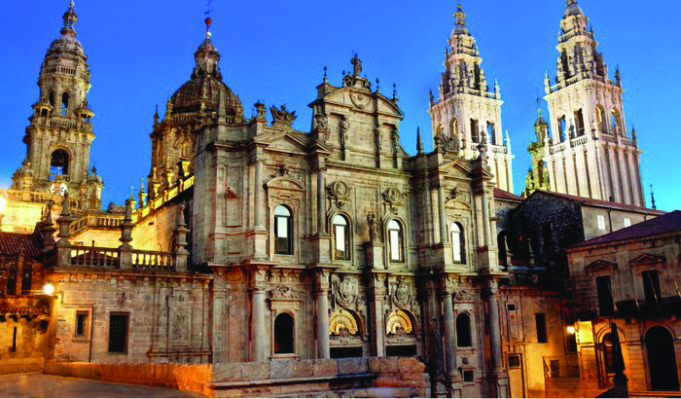El Camino de Santiago or the Way to St. James was a popular network of pilgrimage trails in the Middle Ages that has become one of the top destinations for hikers and cyclists around the world today. The different trails from Spain, France or Portugal all lead to the shrine of St. James the Greatin Galicia, northwest Spain. Today, the Cathedral of Santiago de Compostela, which hosts the shrine, is the most impressive Romanesque monument in Spain.
While in the Middle Ages people traveled these trails to reach the tomb of St. James seeking cures, blessings and cleansing their sins, today some still take up the trail looking for the spiritual experience while many others travel it to savor the beauty of nature, experience the culture and delve into the historical tales.
How to get to the shrine of St. James?
The French Way (780 kilometers)


The French route is the most popular of all. Usually starts from St. Jean Pied de Port in the foothills of the Pyrenees in south-western France to the interiors of northern Spain, the French Way offers you all – vibrant cities, charming medieval towns, enticing landscapes and most importantly concludes with the historical shrine of St. James.
The Northern Way (830 kilometers)


Less popular but equally charming is the Northern Way. This route runs from the Basque Country and along the northern coast of Spain and the mountains of Asturias. Most of the trail falls onto the coastline of the Cantabrian Sea with small fishing villages and rich seafood options. While historically this route was chosen to avoid territories under Muslim rule, today the Northern Way is the choice of sea lovers.
The Portuguese Way (600 kilometers)


For a different taste of el Camino de Santiago, try the Portuguese Way. From the Portuguese city of Porto, make your way through northern Portugal enjoying the blend of Roman ruins, Gothic architecture, Baroque designs, rural communities and local traditions and into the charming region of Galicia in northern Spain where the shrine of St. James awaits you.
The Primitive Way (260 Kilometers)


Sometimes it is referred to as the Original Way because this was the first route ever used by the medieval pilgrims for its natural protection. Today, the Primitive Way is there for those who are passionate about mountain hikes. Travelers cross the high mountains of Asturias savoring the beauty of nature until they reach the shrine of St. James.
The Silver Way (1,000 kilometers)


As for lovers of history, the Silver Way or the Via de la Plata, may be a good way to quench their thirst. Beginning in Seville in Andalusia, a city in south of Spain rich in history and culture, and ending at the shrine of St. James, the Silver Way generously offers a travel through time and across cultures. This route is as old as Roman times and merges with the French Way in its final part.
El Camino de Santiago has been declared World Heritage by UNESCO and the First European Cultural Itinerary. Whether you seek sports, nature, history or a spiritual experience, the Way to St. James is one journey through time that is worthwhile.



















